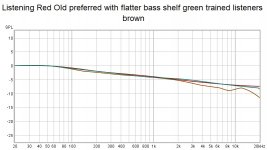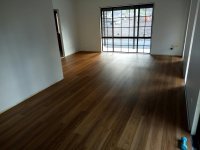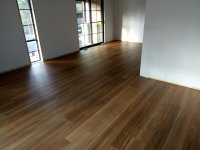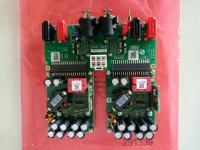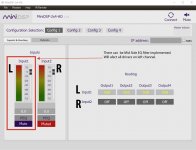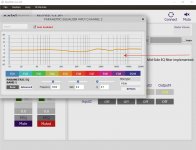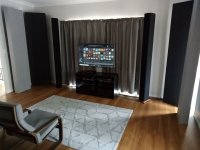Hi guys, as to "who are the some", I thought I read more than one report confirming that angling the speakers inwards improved imaging, which I took as confirmation of my point that side wall reflections off the near wall are reducing imaging for these people when the speakers are not angled away from the side walls. This has to be by a strong 'very early' reflection, as it won't be a consequence of greater spaciousness and envelopment: the latter two can be had as well as uncompromised imaging.
Mind you, I was also careful to note that (I assume) these reports in this thread are based on sighted listening, so 'grain of salt' applies. Just as likely one turns one's speakers inwards and convinces oneself of better imaging, but for the purpose of chatting about generic matters, I put it to one side. But if someone wants to say to me "hang on my speakers are well away from walls so you don't know what you are talking about", then I will invoke the need for DBT protocols. I'm sure we don't want that! So let's stay generic.
So let's stay generic.
@wesayso, now I admit that I drop in and out of this thread, and too much happens to keep up, so I may have misunderstood your 'ambience'. I assumed, since you have an 'ambience amp', that you have separate channels for ambience? Yet your post #1098 focuses on virtual ambience added through the stereo speakers. Which is it? I assumed it was real extra speakers in the last sentence of my #1097, hence I qualified your setup as multichannel. Sorry if I mucked it up.
@fluid my comment about early (side) reflections not meaning just the near side wall, was mainly driven by #1092 (not yours) saying that Toole and Geddes differ on allowing early reflections -- I just wanted to make the generic point that they don't actually differ on that, because what Geddes is pointedly trying to avoid is *very* early side reflections, not everything up to 15 ms.
cheers
Mind you, I was also careful to note that (I assume) these reports in this thread are based on sighted listening, so 'grain of salt' applies. Just as likely one turns one's speakers inwards and convinces oneself of better imaging, but for the purpose of chatting about generic matters, I put it to one side. But if someone wants to say to me "hang on my speakers are well away from walls so you don't know what you are talking about", then I will invoke the need for DBT protocols. I'm sure we don't want that!
@wesayso, now I admit that I drop in and out of this thread, and too much happens to keep up, so I may have misunderstood your 'ambience'. I assumed, since you have an 'ambience amp', that you have separate channels for ambience? Yet your post #1098 focuses on virtual ambience added through the stereo speakers. Which is it? I assumed it was real extra speakers in the last sentence of my #1097, hence I qualified your setup as multichannel. Sorry if I mucked it up.
@fluid my comment about early (side) reflections not meaning just the near side wall, was mainly driven by #1092 (not yours) saying that Toole and Geddes differ on allowing early reflections -- I just wanted to make the generic point that they don't actually differ on that, because what Geddes is pointedly trying to avoid is *very* early side reflections, not everything up to 15 ms.
cheers
I think maybe you read something into the comments that wasn't intended which is easily done.Hi guys, as to "who are the some", I thought I read more than one report confirming that angling the speakers inwards improved imaging, which I took as confirmation of my point that side wall reflections off the near wall are reducing imaging for these people when the speakers are not angled away from the side walls. This has to be by a strong 'very early' reflection, as it won't be a consequence of greater spaciousness and envelopment: the latter two can be had as well as uncompromised imaging.
I have had my speakers in two quite different rooms. The first was a standard rectangular room with no treatment and not a great deal of furniture. It was pretty live and the speakers were angled at about 10 to 15 degrees inwards from straight on. That was based on listening to them without correction and deciding where they sounded naturally best to me. It is long enough ago that my memory isn't good enough to comment on it definitively.
Currently they are in a very different room that is L shaped with openings. There are windows a big potbellied fireplace and much more stuff than before. It is far from an ideal starting point but so far it has proved to be better than expected.
I have added an amount of absorbing treatment. 180mm panels 580mm wide almost full height across both front corners, and two first reflection side panels 150mm thick spaced off the wall by about 100mm on one side and considerably more on the other. The other panel is the picture covered one that is 100mm thick approximately 1500mm x 1000mm. All these together have reduced almost all early reflections quite a lot. As can be seen in the last ETC all reflections are reduced below 20dB from peak until about 25ms or so when there is a bit of natural haas kicker happening. This arrived at the same time as toeing the speakers in to point directly at the listening position.
Mind you, I was also careful to note that (I assume) these reports in this thread are based on sighted listening, so 'grain of salt' applies. Just as likely one turns one's speakers inwards and convinces oneself of better imaging, but for the purpose of chatting about generic matters, I put it to one side. But if someone wants to say to me "hang on my speakers are well away from walls so you don't know what you are talking about", then I will invoke the need for DBT protocols. I'm sure we don't want that!So let's stay generic.
From me there's no intention to suggest that you don't know what you are talking about if that is how you took it. I prefaced my reply stating that I agreed with your comments in general terms. You were talking about very early reflections of 2-3ms due to very near sidewall placement, I was pointing out that I don't and have never had that sort of positioning.
What I have now resembles the traditional triangle of fairly equal distance between the speakers to distance from the speakers to the listening position along a roughly 30 degree angle.
What is interesting about this change in position is that I did not try it for imaging reasons as until recently I have had almost no interest in imaging.
I moved them because I noticed that my preferred house curve and previous position made the speakers brighter off axis than on. By angling them in the top end EQ boost was reduced.
So in this instance there was no confirmation bias or convincing myself that the imaging was better because of something I had done to improve it. The change was an unintended consequence of something else but it was quite audible and brought something in that was a clear improvement for me.
This has all been written here before but I understand it is hard to have a full understanding of every thread you might be interested in.
@wesayso, now I admit that I drop in and out of this thread, and too much happens to keep up, so I may have misunderstood your 'ambience'. I assumed, since you have an 'ambience amp', that you have separate channels for ambience? Yet your post #1098 focuses on virtual ambience added through the stereo speakers. Which is it? I assumed it was real extra speakers in the last sentence of my #1097, hence I qualified your setup as multichannel. Sorry if I mucked it up.
For music wesayso is using two separate channels for ambience which are de-correlated filtered versions of the front two channels with some added low level reverb from the Lexicon plugin. So it is multichannel in that sense but not in the usual discrete multichannel setup.
Fair enough@fluid my comment about early (side) reflections not meaning just the near side wall, was mainly driven by #1092 (not yours) saying that Toole and Geddes differ on allowing early reflections -- I just wanted to make the generic point that they don't actually differ on that, because what Geddes is pointedly trying to avoid is *very* early side reflections, not everything up to 15 ms.
cheers
@wesayso, now I admit that I drop in and out of this thread, and too much happens to keep up, so I may have misunderstood your 'ambience'. I assumed, since you have an 'ambience amp', that you have separate channels for ambience? Yet your post #1098 focuses on virtual ambience added through the stereo speakers. Which is it? I assumed it was real extra speakers in the last sentence of my #1097, hence I qualified your setup as multichannel. Sorry if I mucked it up.
cheers
Whenever I mention virtual ambience, it's separate speakers(*) I talk about. As in the interest of experimenting I have had ambience signals added to mains but that never improved anything.
Geddes himself has mentioned speaking with Toole and they were more in agreement than he had figured they were. He also mentioned the timing and levels of those (let's call them) late early reflection preferences might differ based on listening material. Geddes listens to a lot of studio recorded material while Toole is more into classical music, recorded in real spaces.
Much of what I have been able to achieve has been heavily inspired by both gentlemen as I figured they both have enough experience in the field not to get a whole lot wrong.
That does not mean we need to agree with them on every little thing, but it would be foolish to ignore them. I experiment a lot out of curiosity. At times this leads to foolish errors, other times I might actually hit upon something that works favourably. But usually it is at least based on some scientific notion or idea. I don't have the means to ever get my experience close to any of these guys. But I'm mainly interested in what I can do within the limits I have. Having more people around with arrays surely helps, as it gives us more data points to work from which may lead to new insights and/or improvements.
I've never really spoken to Toole, so no chance to cross examine him but Geddes is pretty open when asked directly. We even exchanged a couple of PM's and I feel he has been a great help and inspiration for me. He's here to keep us honest/real as he puts it. I like that about him.
Probably the biggest deviation of what I chose to use is my mid/side EQ scheme in my mains. The second biggest deviation is the way I use that pair of ambient speakers with a mix of my own. That part was heavily inspired on working on in-car audio and trying to get a small space to sound larger. A member here called werewolf, inspired that part on another forum, further reading/studying the works of David Griesinger made me go even further.
I'll never claim I'm right about what I do, only stating or rather sharing what works (for me) and what doesn't.
Very recent I've been reminded what it means to get closer to 'good' in a setup. If one can up the volume, without really noticing the sound getting louder, you're actually closer to a 'clean sound'. You'll notice it really did indeed get louder if you try to speak etc. To get this, ideally you need to have reduced reflection levels, avoid diffraction as much as possible but also have clean amplification. If any of those three things is not up to snuff, imaging suffers and longer listening sessions might become tiresome, even at a lower volume. Even if it sounds real good at say 85 dB average.
Of these things I mention, reflections actually are the most forgiving, except that they do alter how we perceive the sound. (I'm talking about reflections coming in at about 6-7 ms and later)
(*) calling them separate speakers might not be clear enough, as I do not use them as direct sound sources.
Last edited:
The newer psycho filters were not a resounding success, ultimately they are not preferred to the old faithful recipe. It has highlighted the issue in the high treble that I am hearing on some material. More experiments with top end windowing are in progress to see if anything can be improved there.
An interesting shot of some target curves below (well to me anyway ). The difference between the old preferred target and the new listening curve is very small the only change was a reduction in the bass shelving which was higher before and was the thing that I struggled to get right before. Compared against my best try at a Trained Listeners curve, not much difference there either but it is too bassy for me. The difference between low and high is just a touch too much.
). The difference between the old preferred target and the new listening curve is very small the only change was a reduction in the bass shelving which was higher before and was the thing that I struggled to get right before. Compared against my best try at a Trained Listeners curve, not much difference there either but it is too bassy for me. The difference between low and high is just a touch too much.
Given that these were done in two separate locations with two very different rooms I am a little surprised that I was able to tune them that closely by ear to what I obviously consider to be right

An interesting shot of some target curves below (well to me anyway
Given that these were done in two separate locations with two very different rooms I am a little surprised that I was able to tune them that closely by ear to what I obviously consider to be right
Attachments
I have been renovating the room I use for listening in, took it back to the gyprock and concrete. Carpet tiles and old fireplace are gone, replaced with Hybrid Flooring.
I have been reminded how much damping ordinary everyday items provide. With a concrete floor, full height windows and nothing else inside made for a very impressive echo chamber
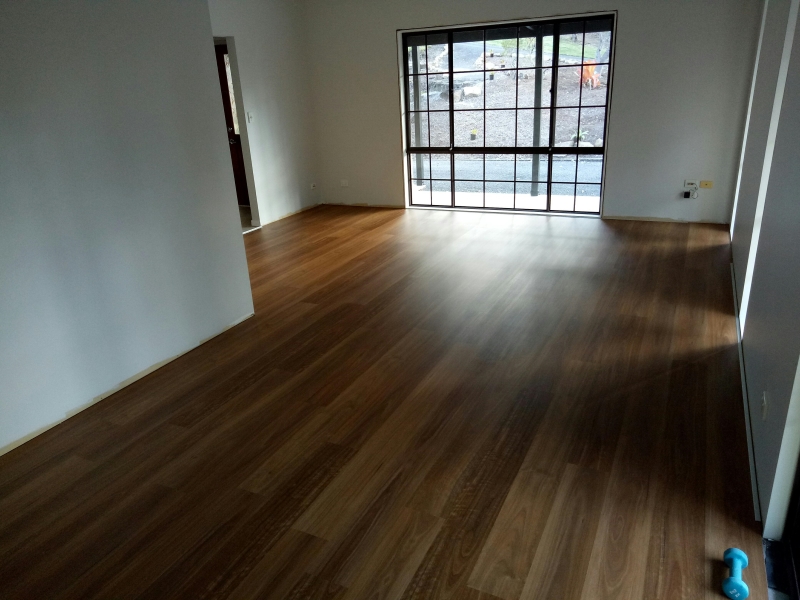
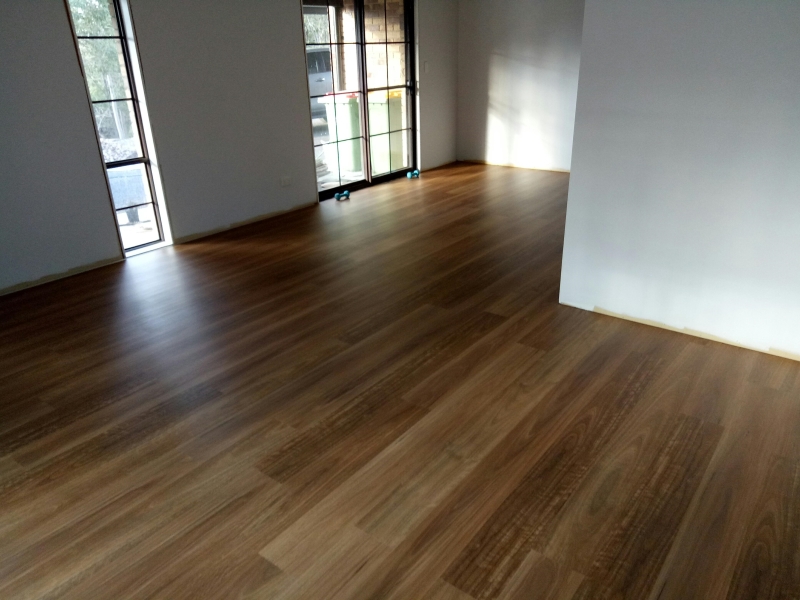
I also bought myself a new toy to play with
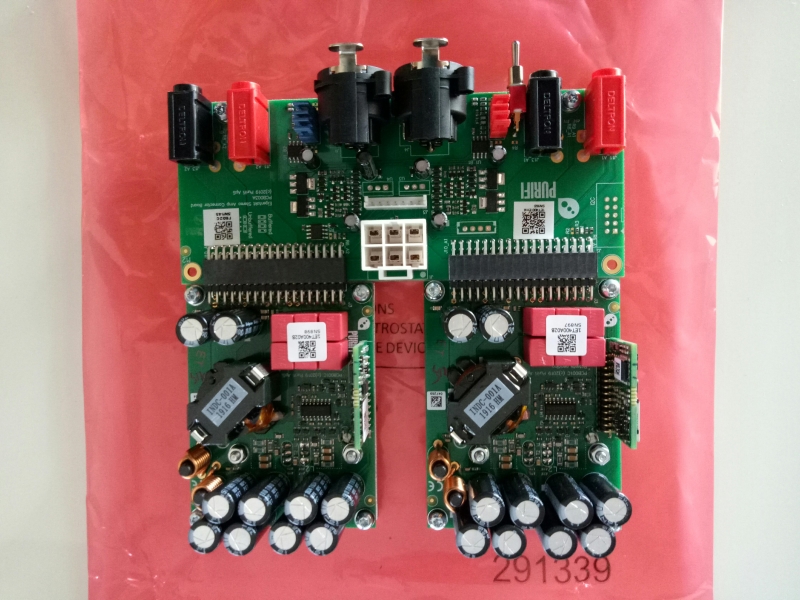
I have been reminded how much damping ordinary everyday items provide. With a concrete floor, full height windows and nothing else inside made for a very impressive echo chamber
I also bought myself a new toy to play with
Attachments
... Renovation looks good
Looking good! You're quite some time ahead of me. Nice work!
Thanks guys! So much work still left to do though....
This should be the easiest amp I have ever assembled electrically. Hardest part will be getting the chassis holes in the right place. I couldn't find a Taobao seller that would CNC the holes on a one off case in the size and colour I wanted this time, so punch and drill press it is.nice toy you got there, enjoy and have best build process with that purified amp signature..
I did tray to make it work....Mine setup have one Mini Dsp 2x4 HD per channel.There is also Mid Side EQ but that is not really possible with MinDSP.
It can be done and with one Mini Dsp 2x4 HD on two way speakers.
There how its done...
Attachments
I'm not really sure what you are showing there, there needs to be a way to decode the Left and Right to Mid and Side process them separately and then recombine them back to Left and Right.
BTW if the images are that large it is best to leave them as attachments and not put them inline, it can make any text in between them hard to follow
BTW if the images are that large it is best to leave them as attachments and not put them inline, it can make any text in between them hard to follow
Yep..that MiniDSP won`t do..I'm not really sure what you are showing there, there needs to be a way to decode the Left and Right to Mid and Side process them separately and then recombine them back to Left and Right.
 but can do this filter :
but can do this filter :Low Shelf 80Hz Q 0.70 Gain -0,5
100Hz Q 0.5 Gain 0.5
600Hz Q 0.5 Gain -3.0
1550Hz Q 1.5 Gain 2.0
High Shelf 2470Hz Q 0.5 Gain 0.8
3000Hz Q 3.5 Gain -1.0
3700Hz Q 2.7 Gain -2.0
5500Hz Q 4.0 Gain 1.0
7200Hz Q 3.0 Gain -1.5
Have no idea why is happening,already have ask administrator to figure it out...in a past have worked as it should.BTW if the images are that large it is best to leave them as attachments and not put them inline, it can make any text in between them hard to follow
No worries, it is the processing of the Mid separately to the side signal which is the key to the EQ working to reduce the darkening of the phantom centre when early reflections are reduced.Yep..that MiniDSP won`t do..but can do this filter :
Also the Q definition of the MiniDSP is not the same as the equalizer the settings were programmed on so they will be similar but not quite the same.
True...those Q definitions is not the same among different hardware ...Also the Q definition of the MiniDSP is not the same as the equalizer the settings were programmed on so they will be similar but not quite the same.
Can get crazy really fast when for same one "Q" means "Q" or for other one it is a name for a beer ...
I have not tried to put the absorbers directly behind the arrays, when I do some measuring I will move them around to see what the effect is. I put the room back mainly the way it was before in the hopes that the existing filters would work and so far that seems to hold true.
I have tried it, while making measurements. Not a big difference strangely enough...
I even put fiberglass absorption on top of the arrays and measured it that way. There aren't many places that I didn't try while measuring it on the go.
Not with a finished panel like fluid shows, just some raw fiberglass panels moving around in the room. (on a day that I was all alone in the house)
So no absorption needed behind the arrays was pretty acceptable for me. I relied on the measurements to show me that.
The only influence I could find from the back wall was bass support. That determined the baffle from wall distance for me.
I even put fiberglass absorption on top of the arrays and measured it that way. There aren't many places that I didn't try while measuring it on the go.
Not with a finished panel like fluid shows, just some raw fiberglass panels moving around in the room. (on a day that I was all alone in the house)
So no absorption needed behind the arrays was pretty acceptable for me. I relied on the measurements to show me that.
The only influence I could find from the back wall was bass support. That determined the baffle from wall distance for me.
Last edited:
- Home
- Loudspeakers
- Full Range
- Full Range TC9 Line Array CNC Cabinet
